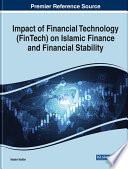
Strategi Manajemen Pemasaran
Buku ini merupakan bagian dari ilmu Pemasaran sehingga para pembaca akan lebih mudah memahami Strategi Manajemen Pemasaran dalam memenuhi kebutuhan konsumen. Materi dalam buku terdiri dari 11 Bab yang menambahkan bagian pemasaran digital sebagai kesiapan organisasi dalam menghadapi “new age technologies”, dan terjadi peningkatan pemahaman konsumen akan perkembangan teknologi berdampak pada pengalaman digital mereka untuk memenuhi kebutuhan yang lebih cepat dan baik. Untuk itu perusahaan harus menyesuaikan strategi pemasaran dalam memasarkan barang dan jasa. Buku ini membahas tentang: Bab 1 Hakikat Pemasaran Bab 2 Perencanaan Strategis dan Proses Pemasaran Bab 3 Riset Pemasaran Bab 4 Loyalitas Pelanggan Bab 5 Kepuasan Pelanggan Bab 6 Strategi Bersaing di Pasar Bab 7 Strategi Produk Dan Jasa Bab 8 Strategi Penetapan Harga Bab 9 Strategi Promosi Bab 10 Strategi Diversifikasi Bab 11Strategi Pemasaran Digital
- ISBN 13 : 6233423775
- ISBN 10 : 9786233423779
- Judul : Strategi Manajemen Pemasaran
- Pengarang : Liharman Saragih, Astri Rumondang Banjarnahor, Novy Anggraini, Andriasan Sudarso, Yurilla Endah Muliatie, Darwin Lie, Yudiyanto Joko Purnomo, Bonaraja Purba, Eko Sudarmanto, Sony Kuswandi, Adhi Prasetio, Astri Rumondang Banjarnahor, Novy Anggraini, Andriasan Sudarso, Yurilla Endah Muliatie, Darwin Lie, Yudiyanto Joko Purnomo, Bonaraja Purba, Eko Sudarmanto, Sony Kuswandi, Adhi Prasetio, Astri Rumondang Banjarnahor, Novy Anggraini, Andriasan Sudarso, Yurilla Endah Muliatie, Darwin Lie, Yudiyanto Joko Purnomo, Bonaraja Purba, Eko Sudarmanto, Sony Kuswandi, Adhi Prasetio, Astri Rumondang Banjarnahor, Novy Anggraini, Andriasan Sudarso, Yurilla Endah Muliatie, Darwin Lie, Yudiyanto Joko Purnomo, Bonaraja Purba, Eko Sudarmanto, Sony Kuswandi, Adhi Prasetio, Astri Rumondang Banjarnahor, Novy Anggraini, Andriasan Sudarso, Yurilla Endah Muliatie, Darwin Lie, Yudiyanto Joko Purnomo, Bonaraja Purba, Eko Sudarmanto, Sony Kuswandi, Adhi Prasetio,
- Kategori : Business & Economics
- Penerbit : Yayasan Kita Menulis
- Bahasa : id
- Tahun : 2022
- Halaman : 202
- Google Book : https://play.google.com/store/books/details?id=eKlaEAAAQBAJ&source=gbs_api
-
Ketersediaan :
Yayasan Kita Menulis. Laudon, K.C. (2017) E-commerce 2017 : business, technology, society. 13th edn. Boston: Pearson Education. Lee, W. O. And Wong, L. S. (2016) 'Determinants Of Mobile Commerce Customer Loyalty In Malaysia', ...









